




Bitchu Matsuyama Castle floating on the sea of clouds is simply fantastical. It is called the “mountain castle in the sky” for the way it is surrounded in mist. Each year, many people visit the Sea of Clouds Observation Deck, which is the best viewing spot.

From dawn to about 8 AM, from late September to early April. Thick morning fog occurs in the early morning from late October to early December in particular.

Mornings where it was warm during the daytime on the previous day, and cooled down from night to early morning with a large temperature difference. It is more likely to appear on days forecast to be sunny in the weather forecasts. It does not appear on rainy mornings. It is also said that mist is likely to appear in the early morning 2 or 3 days after rainfall.

The “Weather AI for Weekend Explorer” website lists predictions for the sea of clouds to appear on Saturdays and Sundays. You can refer to it when planning your trip.

The Sea of Clouds Observation Deck is located in a different location from Mt. Gagyu, where the castle tower is. You may encounter wild monkeys (which are designated as national natural treasures) in the area surrounding the observation deck. Respond in a calm manner, so as not to excite the wild monkeys. From December to the end of February, caution is required regarding accumulated snow.
The following introduces spots to enjoy as you interact with history and nature while walking to Bitchu Matsuyama Castle.
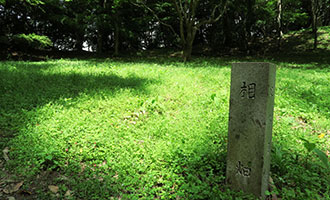
The Aihata castle gate ruins are said to be the historic battle site where the Bitchu Heiran Battle was fought in 1574.A well is among the remains.
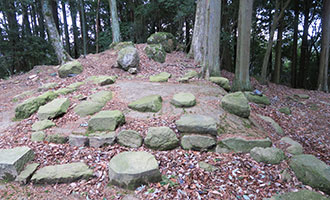
A Shinto shrine was constructed in the early modern era at the peak of Mt. Gagyu (480 m).You can view the shrine ruins that were found during an excavation survey.
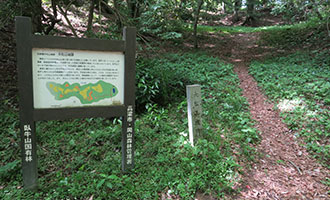
A fort was constructed here in 1240 by Akibasaburo Shigenobu, which became the beginning of Bitchu Matsuyama Castle. The medieval fort ruins are still here today.
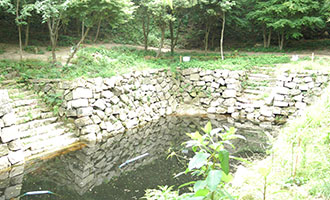
This total masonry artificial pond is one of the largest in Japan used as a reservoir for the castle. It is said that, during battles, people washed their swords or necks of the war dead here. The pond is therefore also called the “pond of blood” and the “neck washing pond”.
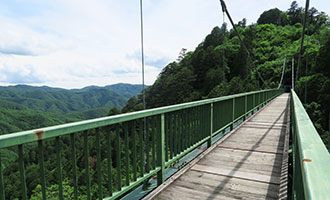
This suspension bridge is 730 m, or about a 30 minute walk, from the castle tower. You’ll feel like you’re walking on air.
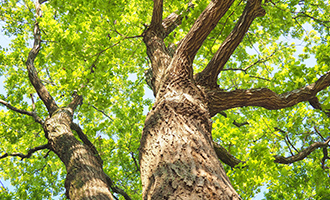
Tree belonging to Fagaceae Quercus. Characterized by leaves that are whitish on their backs. Flowers bloom in April and May, and fruits mature in September and October. An old tree selected for the “100 Giants of the Forest” list can be seen near the Tenjin-no-maru ruins.
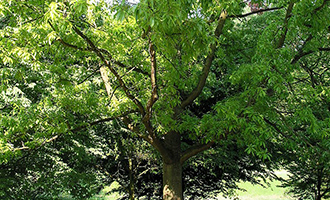
Tree belonging to Fagaceae Quercus. Its leaves are oblong, with sharp green sections. It is deciduous; however, its leaves fall off not in autumn when they turn brown, but when new green leaves start to grow in spring.
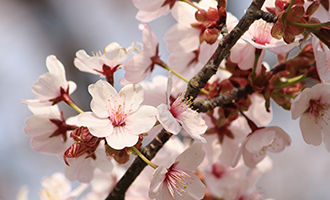
Belongs to Rosaceae Cerasus. Representative of Japan’s wild cherry trees, it is often described in waka, or traditional Japanese poems. Among cherry tree species, it has a long life and can grow over 30 m in height.
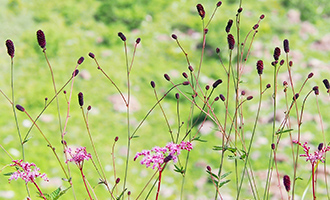
Belongs to Rosaceae Sanguisorba. Characterized by its dark red spikes, shaped like a round dumpling. Its flowers bloom in July and August, starting from the top of the spikes and moving downward.
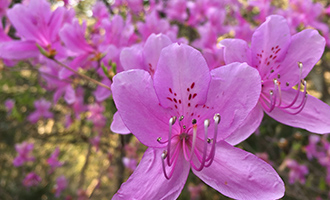
Belonging to Ericaceae Rhododendron, this deciduous shrub can reach several meters in height. Its Japanese name means, “Rhododendron with three small leaves”. Purple to light violet flowers bloom in March and April.
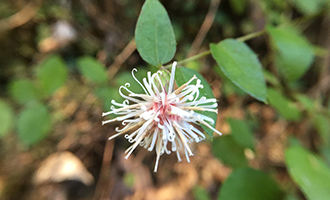
Belongs to Asteraceae Pertya. Its name is derived from how its stalks were bundled and used as material for a brooms (“houki”) on Mt. Koya. Characterized by its leaves. Leaves on its branches for the first year have a broad egg shape, and leaves from the second year are long and thin.
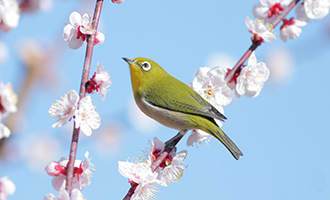
Belongs to Passeriformes Zosteropidae Zosterops. It can reach about 12 cm in length, and is characterized by the white eyering around its eyes. It prefers evergreen broad-leaved forests.
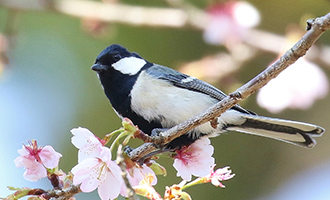
Belongs to Passeriformes Paridae Parus. Characterized by its white cheeks and the necktie-like pattern from its chest to its belly. It can reach about 14 cm in length.
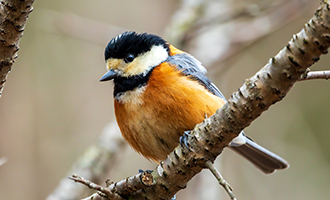
Belongs to Passeriformes Paridae Parus. It is reddish-brown from its chest to its belly, and can reach about 14 cm in length.
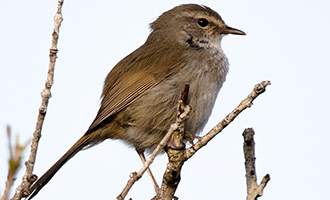
Belongs to Passeriformes Cettiidae Horornis. It is known for its song, and has an olive brown color on its back and white on its front. It can reach about 15 cm in length.
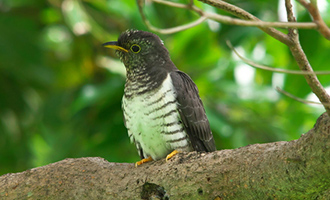
Belongs to Cuculiformes Cuculidae Cuculus. It is about 28 cm in length. Its quick chirping of “kyokyokyokyo” can sound like “Tokkyo kyoka kyoku” (the Japanese term for “patent permission office”).
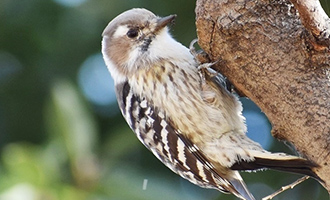
Belongs to Piciformes Picidae Dendrocopos. It is about 15 cm in length. One or two of these birds can sometimes be found in a flock of tits.